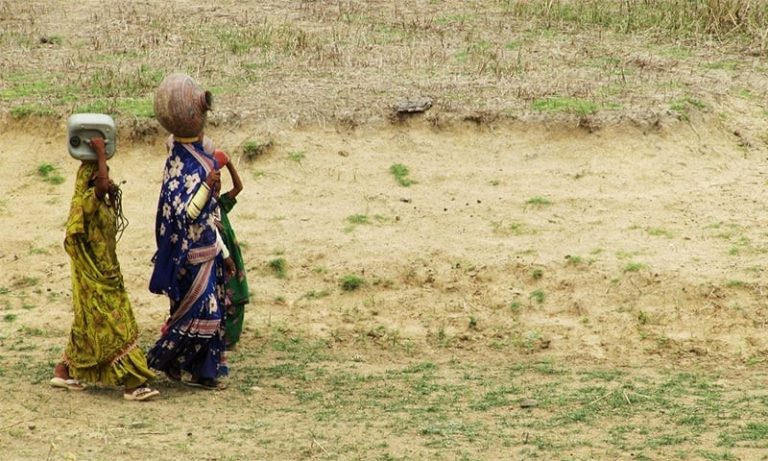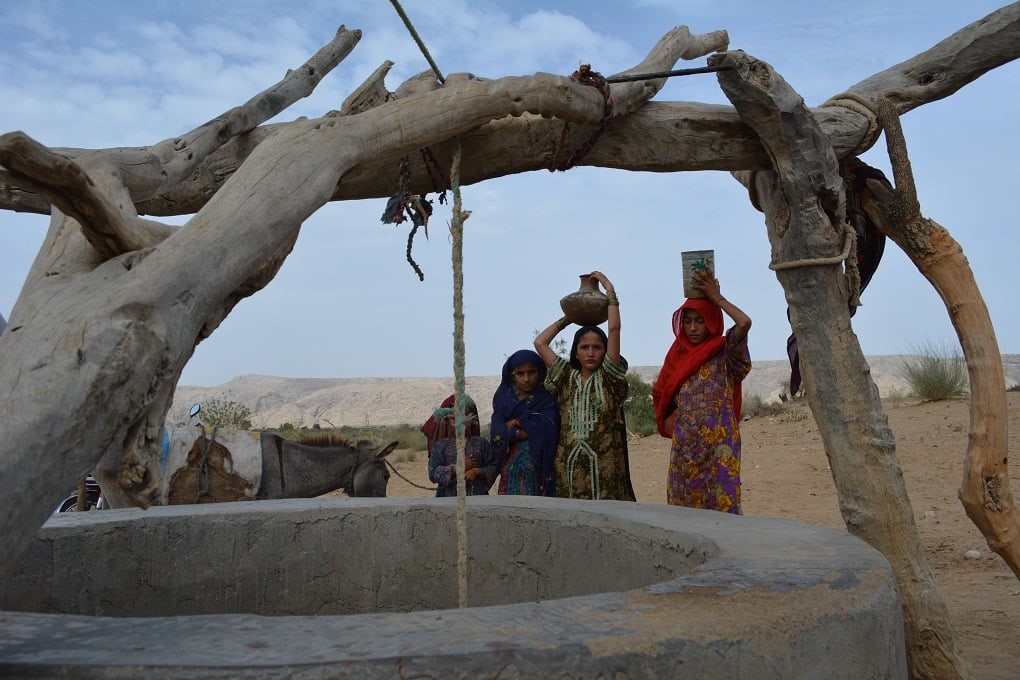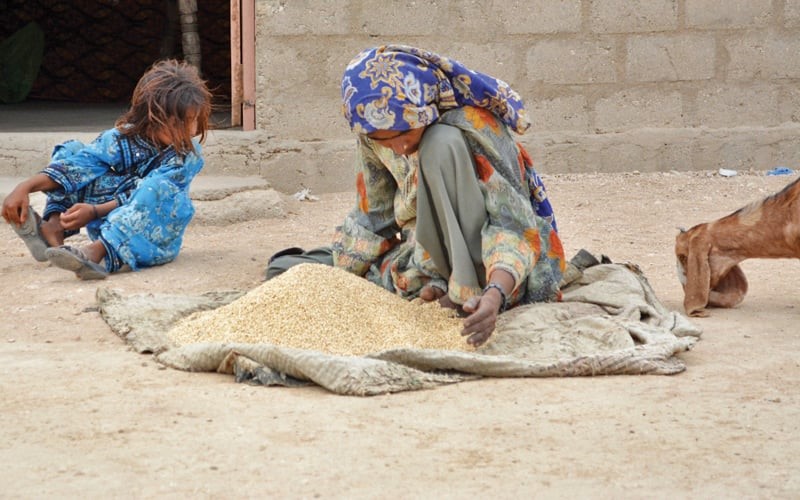
The climate is changing at an alarming speed, resulting in global warming, droughts, and desertification
By Prof. Dr. Abdullah G Arijo
The climate is changing at an alarming speed, resulting in global warming, droughts, and desertification. Water is a miraculous molecule that constitutes 70 to 90 percent of both prokaryotic and eukaryotic cells and provides an aqueous atmosphere for biological activities that are required for life. This precious molecule has diverse properties and is considered an essential biomolecule for living organisms. Therefore, it is crucial for sustaining.
Over the past century, industrialization has significantly altered the natural state of the Earth, resulting in the depletion of the ozone layer, increased production of CFC gases, and deforestation, all of which have contributed to climate.
Read: CONSERVATION IS IMPERATIVE FOR OUR FUTURE
The severity of climate change is not fully understood by most people. Some individuals who are aware of the issue may choose to participate in TV shows or write articles for newspapers and magazines to gain recognition, but a practical solution to the problem has yet to be seen.
Climate change affects cloud formation, rainfall patterns, and Earth’s temperature. Clouds block sunlight and trap heat, but their impact is complex.
 Underestimated Cooling: Existing climate models tend to underestimate the lifespan and cooling effects of clouds. These models simulate too much rainfall from clouds, leading to an underestimation of their cooling effect.
Underestimated Cooling: Existing climate models tend to underestimate the lifespan and cooling effects of clouds. These models simulate too much rainfall from clouds, leading to an underestimation of their cooling effect.
Warm Clouds: Researchers have updated climate models with a more realistic simulation of rainfall from “warm” clouds (those containing only water, not the ice). This adjustment increases the lifespan of clouds by nearly three times, enhancing their overall cooling impact.
CMIP6 Models: The latest generation of global climate models (CMIP6) predicts faster future warming. However, fixing the rainfall simulation issue reduces the amount of predicted warming by a similar magnitude as the difference between CMIP5 and CMIP6 models.
Precipitation and Evaporation
Intensified Water Cycle: Rising temperatures due to climate change intensify the Earth’s water cycle, and evaporation increases, leading to more frequent and intense storms.
Drying Over Land: While some areas experience increased precipitation, others face drying due to enhanced evaporation.
Cloud Feedback and Temperature
Cloud Feedback: Global warming affects cloud cover, height, and thickness. This phenomenon, known as cloud feedback, impacts temperature regulation.
Balancing Parasol and Blanket Effects: Changes in cloud properties can shift the balance between their cooling (parasol) and warming (blanket) effects.
Overall Impact
Complex Interplay: Climate change influences cloud behavior, which in turn affects precipitation patterns. While some regions may receive more rain, others may experience drying.
Ongoing Research: Scientists continue to study clouds’ role in climate change to refine models and understand their full impact.
In summary, clouds are intricate players in the climate system, and their behavior under changing conditions remains an area of active investigation. We need to understand the causes of Global Warming.
Greenhouse Gas Emissions
Carbon Dioxide (CO₂): The primary culprit is the release of CO₂ into the atmosphere. Activities like burning fossil fuels (oil, gas, coal) for transportation and electricity generation contribute significantly.
Methane (CH₄): Another potent greenhouse gas, responsible for about 20% of global warming. Sources include livestock (especially cows), rice paddies, and landfills.
Human Activities
Industrial Processes: Factories, power plants, and other industrial activities emit greenhouse gases.
Deforestation: Cutting down trees reduces the planet’s ability to absorb CO₂.
Agriculture: Livestock farming and rice cultivation release methane.
Global Impact
The United States is a major emitter, with high per capita carbon footprints.
100 companies, mainly oil and coal producers, contribute to 71% of global greenhouse gas emissions.
Will this always remain as such? No, there are solutions to Combat Global Warming
Mitigation
Reduce Emissions: Target the biggest sources—transportation and electricity. Transition to cleaner energy sources (solar, wind, hydro) and promote electric vehicles.
Energy Efficiency: Use energy-efficient appliances, LED lighting, and smart thermostats.
Carbon Capture: Develop technologies to capture and store CO₂ emissions.
Adaptation
Protect Vulnerable Areas: Coastal regions and low-lying islands need adaptation strategies against rising sea levels.
Resilient Infrastructure: Build infrastructure that can withstand extreme weather events.
Biodiversity Conservation: Preserve ecosystems to enhance resilience.
Individual Actions
Reduce Meat Consumption: Livestock farming contributes to methane emissions. Consider plant-based diets.
Limit Air Travel: Airplanes emit significant CO₂. Opt for alternatives when possible.
Support Renewable Energy: Invest in solar panels or support renewable energy initiatives.
 Impact of Drought in Thar Desert
Impact of Drought in Thar Desert
Tharparkar, a district in the Sindh province of Pakistan, grapples with the harsh realities of drought and desertification. Let us look at the challenges faced by this arid region. Tharparkar, also known as the Thar Desert, lies in the southern part of Sindh. It spans approximately 22,000 square kilometers and is home to around one million people. The region experiences extreme aridity, characterized by low and erratic rainfall, intense heat, and abundant sunshine. High dunes and sparse vegetation cover much of its surface.
Tharparkar, a district in the Sindh province of Pakistan, grapples with the harsh realities of drought and desertification
Water Scarcity: Tharparkar faces acute water scarcity due to its low rainfall and limited water sources. Only two streams flow during the rainy season, making it challenging to provide drinking water for the population. In most years, the area grapples with drought conditions when rainfall is insufficient. The region’s extreme aridity exacerbates the water crisis.
 Human Development Challenges: Tharparkar has the second lowest Human Development Index (HDI) in Pakistan. Over 80% of the population lives below the extreme poverty line. The district’s inhabitants struggle to find food and water during droughts, leading to migration to other areas.
Human Development Challenges: Tharparkar has the second lowest Human Development Index (HDI) in Pakistan. Over 80% of the population lives below the extreme poverty line. The district’s inhabitants struggle to find food and water during droughts, leading to migration to other areas.
Agro-Forestry Approaches: Organizations like SCOPE are actively working to combat desertification in Tharparkar. They have established agropastoral farms to promote organized agroforestry practices. These farms aim to mitigate the effects of drought by fostering sustainable approaches. Training local farmers in pasture and agroforestry management helps enhance resilience in an unfavorable environment.
The Tharparkar’s battle against desertification involves innovative strategies, community engagement, and a commitment to improving livelihoods in this challenging environment. But this requires long-term policies.
___________________
 Prof. (R) Dr. Abdullah G. Arijo is Advisor and Visiting Professor, SBBUVAS, Sakrand, Pakistan. He is Ex-Chairman, Department of Parasitology, Sindh Agriculture University and Ex-Advisor Academics & P&D to Vice Chancellor SAU Tandojam
Prof. (R) Dr. Abdullah G. Arijo is Advisor and Visiting Professor, SBBUVAS, Sakrand, Pakistan. He is Ex-Chairman, Department of Parasitology, Sindh Agriculture University and Ex-Advisor Academics & P&D to Vice Chancellor SAU Tandojam
Very nice 🌹
Very good article
Good luck 👍
Article is better😊
Very good
This article is good
Good luck
Knowledgeable 🥰
Very good 👍🏻
Good luck
Nice
It’s beneficial to me 🥰
Nice Sir
Nice Sir Knowledgeable
It’s beneficial to me🥰
Great dear sir